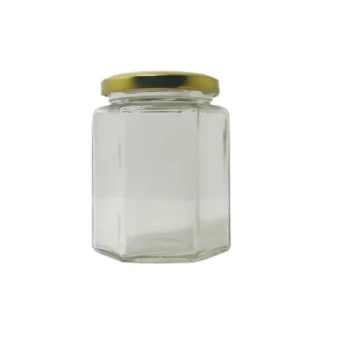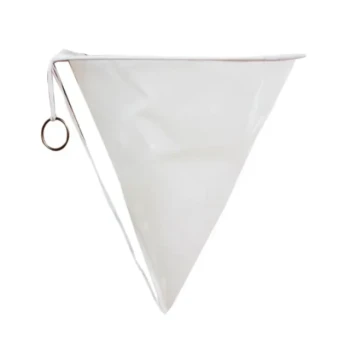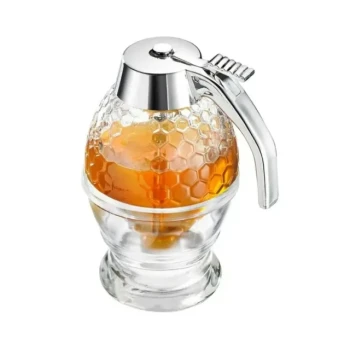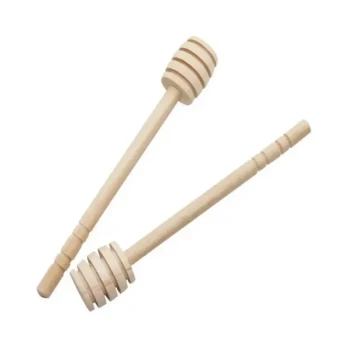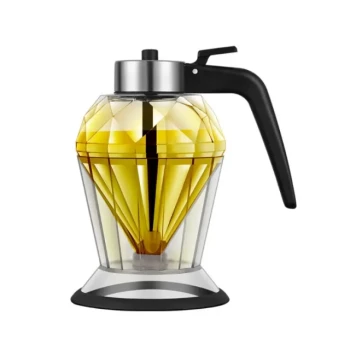In short, a honey pail is a specialized, food-grade container engineered specifically for the bulk storage and transportation of honey. Unlike a generic bucket, every feature of a honey pail is designed to protect the integrity, purity, and safety of the honey from the hive to the final destination.
The true purpose of a honey pail is not just to hold honey, but to preserve its value. Its critical features—food-grade material, a secure lid, and robust construction—are non-negotiable for protecting your product and ensuring consumer trust.
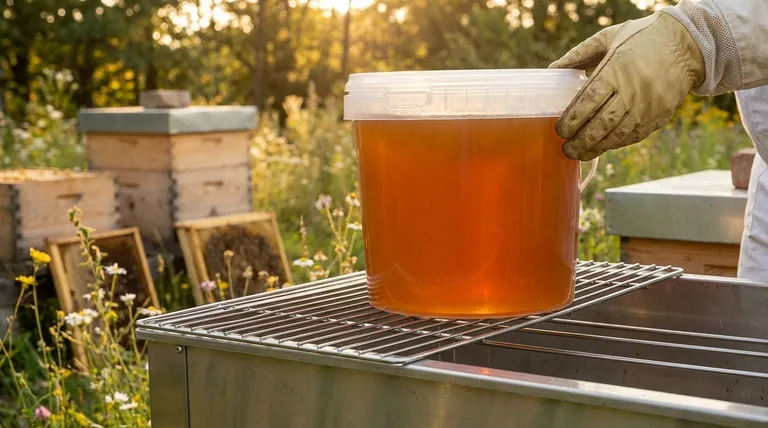
The Anatomy of a Proper Honey Pail
A honey pail may look simple, but its design is deliberate. Each component serves a vital function in maintaining the quality of the honey it holds.
The Critical Role of Food-Grade Plastic
The most important feature of a honey pail is the material it is made from. These containers are typically made from food-grade PET (Polyethylene terephthalate) plastic.
This is not the same as a bucket from a hardware store. Food-grade plastic is certified to be free of dyes and harmful chemicals that could otherwise leach into the honey, contaminating its flavor and compromising its safety. The smooth, non-porous surface also prevents honey from seeping into the plastic and makes the pail easy to clean thoroughly.
Ensuring Security with a Tamper-Evident Seal
Professional honey pails feature a tamper-evident opening. This is usually a tear-off strip or a breakable tab on the lid that must be removed before the pail can be opened for the first time.
This feature provides a clear, visual guarantee to you or your customer that the honey has not been opened or contaminated during transport or storage. It is an essential element for building consumer confidence and ensuring food safety.
Built for Durability and Reusability
Honey is dense and heavy, weighing approximately 12 pounds per gallon. Honey pails are constructed to handle this significant weight without warping, cracking, or failing.
Their robust design also makes them re-usable, which is a key benefit for beekeepers who need reliable containers for long-term storage season after season. This durability makes them a cost-effective investment over time.
Why a Standard Bucket Is a Costly Mistake
It can be tempting to use a cheaper, generic bucket for honey, but doing so introduces significant risks that far outweigh the minor cost savings.
The Risk of Chemical Contamination
General-purpose buckets are often made from recycled plastics of unknown origin and may contain chemical release agents from the molding process. These chemicals can contaminate your honey, creating off-flavors or rendering it unsafe for consumption.
The Problem with an Improper Seal
A simple snap-on lid found on a standard bucket is not airtight. This allows moisture from the air to be absorbed by the honey, which can raise its water content and lead to fermentation and spoilage. It also fails to protect against pests like ants or contamination from dust.
Structural Failure Under Load
A standard bucket and its handle are not designed to carry the heavy, sustained load of honey. The handle can break or the bucket itself can deform and fail, leading to a catastrophic and wasteful spill of your valuable product.
Understanding the Trade-offs
While plastic honey pails are the industry standard for bulk handling, it's useful to understand them in context.
Plastic vs. Other Materials
Glass jars are excellent for retail packaging but are too heavy, fragile, and expensive for bulk storage or transport. Stainless steel tanks are the gold standard for large-scale processing but are prohibitively expensive for most beekeepers.
The food-grade plastic pail represents the ideal balance of safety, durability, and cost-effectiveness for the vast majority of bulk honey applications.
Cost as an Investment
A proper honey pail is an investment in quality control. The slightly higher upfront cost is negligible compared to the value of the honey inside and the cost of losing an entire batch to contamination, spoilage, or a container failure.
Making the Right Choice for Your Goal
Select your container based on its intended job.
- If your primary focus is long-term bulk storage: Prioritize a pail with a secure, gasketed lid to create an airtight seal that prevents moisture absorption.
- If your primary focus is transporting honey: The tamper-evident seal and a strong, ergonomic handle are the most critical features for safety and security.
- If your primary focus is bottling for market: Consider a pail equipped with a "honey gate"—a pre-installed spigot near the bottom that allows for clean, controlled pouring into jars.
Choosing the right pail is the final, critical step in honoring the work that goes into producing pure, high-quality honey.
Summary Table:
| Feature | Purpose | Benefit for Beekeepers |
|---|---|---|
| Food-Grade PET Plastic | Prevents chemical leaching | Ensures honey purity and safety |
| Tamper-Evident Seal | Shows if container has been opened | Builds consumer trust and ensures food safety |
| Robust Construction | Handles heavy weight of honey | Prevents spills, supports reusability for cost savings |
Protect your harvest and your reputation with the right equipment.
For commercial apiaries and distributors, the quality of your honey depends on the quality of your containers. HONESTBEE supplies professional-grade beekeeping supplies and equipment, including durable, food-safe honey pails designed for wholesale operations.
We understand the demands of large-scale beekeeping. Our products are selected to help you maintain the highest standards of purity and efficiency from the hive to the market.
Contact HONESTBEE today to discuss your bulk container needs and secure your supply of reliable beekeeping equipment.
Visual Guide
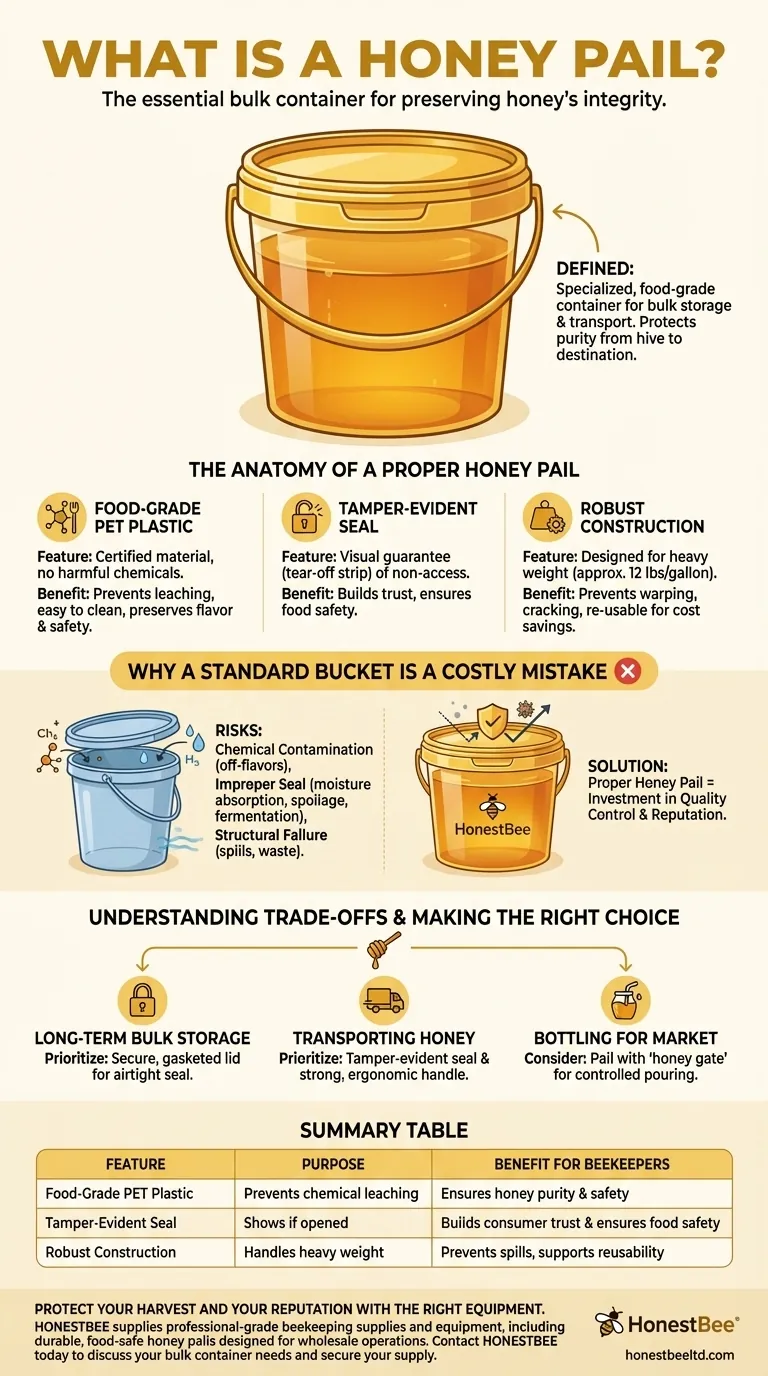
Related Products
- Stainless Steel Pail Perch Bucket Bench
- Hexagonal Glass Honey Jars with Metal Lug Caps Elegant Versatile Packaging
- Inverted Squeezable Honey Jar with No Drip Flip Top Cap for Easy Pouring
- Professional Cone-Shaped Honey Filter with Reinforced Steel Ring
- Honeycomb Style Drip Free Honey Dispenser
People Also Ask
- What factors influence honey crystallization? A Guide to Natural Texture Changes
- Does honey draw moisture? Yes, and here's why it's crucial for beekeepers
- How does higher moisture levels affect microbial growth in honey? It's the primary cause of fermentation and spoilage.
- What qualities are important for someone starting in beekeeping? Build a Thriving Apiary with the Right Mindset
- What are the benefits of the screw design in a stainless steel honey pump? Preserve Honey Quality and Integrity

